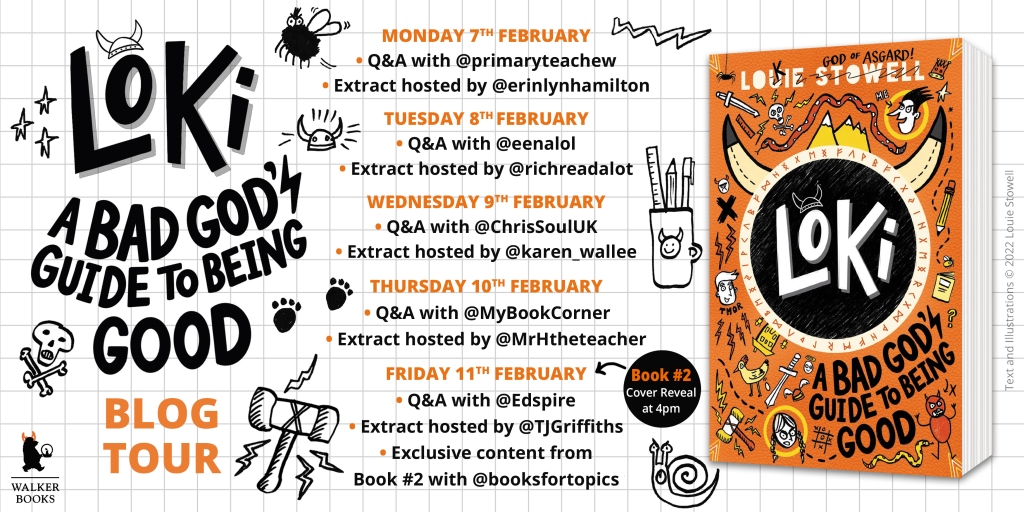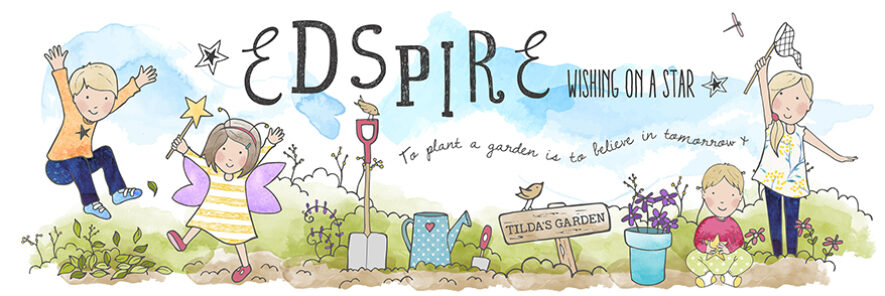Today is our stop on the book tour for Loki: A Bad God’s Guide To Being Good

Esther and William are both LOVING this book. It is incredibly funny and very much in tune with William’s sense of humour.
Esther and William are OBSESSED with Lord of the Rings. The fact that Louie Stowell shares their love for the trilogy has made them love Loki all the more.
They are currently learning to write in Runes and they are very keen to learn Elvish. They reread their favourite parts of the books and have the film audio playing all the time. They are always acting out scenes and discussing favourite characters and extracts from the films and stories. They want me now to find the dramatisation that Louie Stowell loved as a child. (See Q&A below)
As well as a love for hobbits, elves and orcs the twins also share Louie and Tolkien’s love of Norse mythology. They have loved finding suitable earth jobs for the different Norse Gods inspired by an Authorfy Scheme of Work to accompany the Loki book. William especially, has loved “joining the god of mischief and trickery for mayhem, thrills and rib-tickling adventure!”
We cannot wait for Book 2!

To give you a sense of just how awesome Louie and Loki are, here is a little Q&A with the author of A Bad God’s Guide To Being Good.
When illustrating your version of Loki, did you use any other depictions of Loki as reference or did you rely solely on your own imagination?
I drew Loki as a mortal child first – and the only reference there was Dennis the Menace, whose hair is aspirational. Discovering what he should look like was a gradual process of evolving doodles. But when I came to draw him as an adult god, I looked back at medieval carvings, especially the eighth-century Loki Stone at Kirkby Stephen Church, Cumbria. That shows him with horns and a beard, so I gave him both those things. Also, horns are cool.Could you give one piece of advice to aspiring illustrators?
Find your style! You’ll be told to draw all kinds of different ways, but your way is best in the end, because it’s unique.Loki has a very distinct narrative voice. He’s sharp, witty, cynical and often laugh-out-loud hilarious. How long did it take to perfectly capture his narrative voice throughout the book? What was the process?
His voice was the first thing that came, so I just sort of lucked out on that I suppose. I’d had Loki – the god and the character – in the back of my mind for a while, so I think it developed subconsciously. I’ve always found characters with limited self-knowledge and a very high opinion of themselves fascinating, and voices that are all bluster with a lot of fear underneath compel meDid you have a favourite book/series growing up?
Lord of the Rings. I knew it back to front and read it again and again. Though, my favourite version of it wasn’t the book, but the audio dramatisation – it cut out all the boring stuff and focussed in on the drama. I learned Elvish as a teenager, wrote Lord of the Rings fanfic before I knew what fanfic was and decided to write a play of The Lord of the Rings as a child. But I couldn’t bear to leave out any of my favourite bits, which was apparently all of it, so the first scene was about 50 pages long. Oh, and the cartoon was ace, too. I love consuming stories across multiple media.What was it about Norse mythology that first interested you?
The weirdness and the variety. Norse stories also tend to be very action-packed and exciting, with plenty of humour too. They can be dark, but in the darkness, there’s usually something to make you smile.
We were sent a copy of the book for the purpose of the book tour
